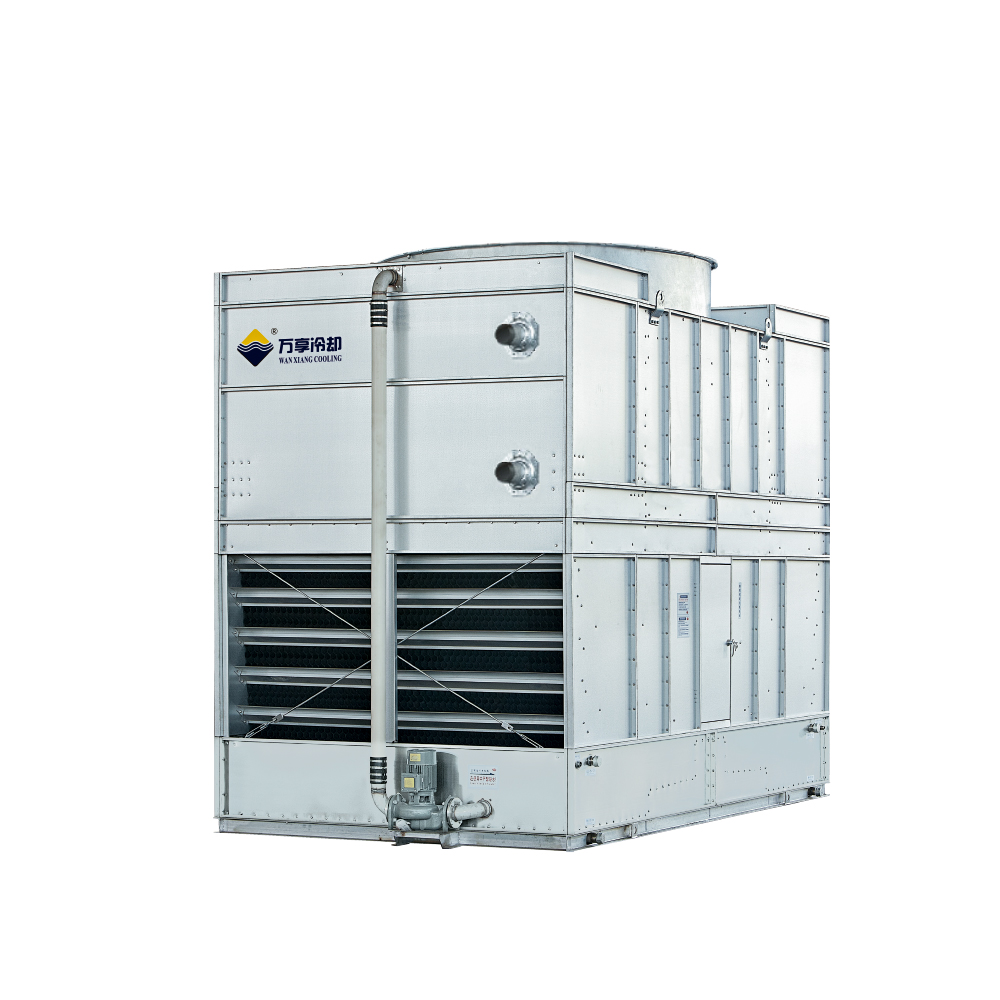
Model: FZHL-341-- FZHL-434QG
Rated power: 6.2kw --70kw
Voltage: 380V/50HZ
Nominal operating condition heat dissipation: 450kW -6550kW
Length: 2250mm -4350mm
Width: 3792mm -7960mm
Height: 3550mm -6050mm
Product principle
The high-temperature gaseous refrigerant inside the coil of the HL series evaporative condenser exchanges heat with the spray water and air outside the coil, and the refrigerant inside the tube gradually condenses from gaseous to liquid. The super strong wind force of the induced draft fan completely covers the surface of the coil with sprayed water, and the heat transfer effect is significantly improved by the water taking advantage of the wind force. After the spray water and air absorb heat, the temperature increases, and some of the water changes from liquid to steam. The latent heat of evaporation carries away a large amount of heat, and the water in the hot air is intercepted by the water blocking plate and collected in the PVC heat exchange layer. The water in the PVC heat exchange layer is cooled by the flowing air, the temperature decreases, enters the collection tank, and is then pumped into the spray water system by the circulating water pump to continue the circulation. The water lost to the air is replenished by the water level regulator.
Product Features
The HL evaporative condenser adopts a double-sided arrangement of coils, which provides a larger air flow space and a larger air outlet. It uses low-speed wide blade aviation wing blades, resulting in lower operating noise; Larger models use gear reduction drive motors, which can achieve higher driving efficiency and motor efficiency. The overall efficiency of the machine is more than 20% higher than that of ordinary evaporative cooling.
adopts the design of wind and water in the same direction, which makes the heat dissipation of the internal coils more thorough. Combined with the secondary heat dissipation of the spray water flowing through the PVC packing by the wind, it achieves efficient heat transfer of the evaporative condenser. At the same time, the wind and water in the same direction minimize the formation of pipe wall scaling and dry spots.